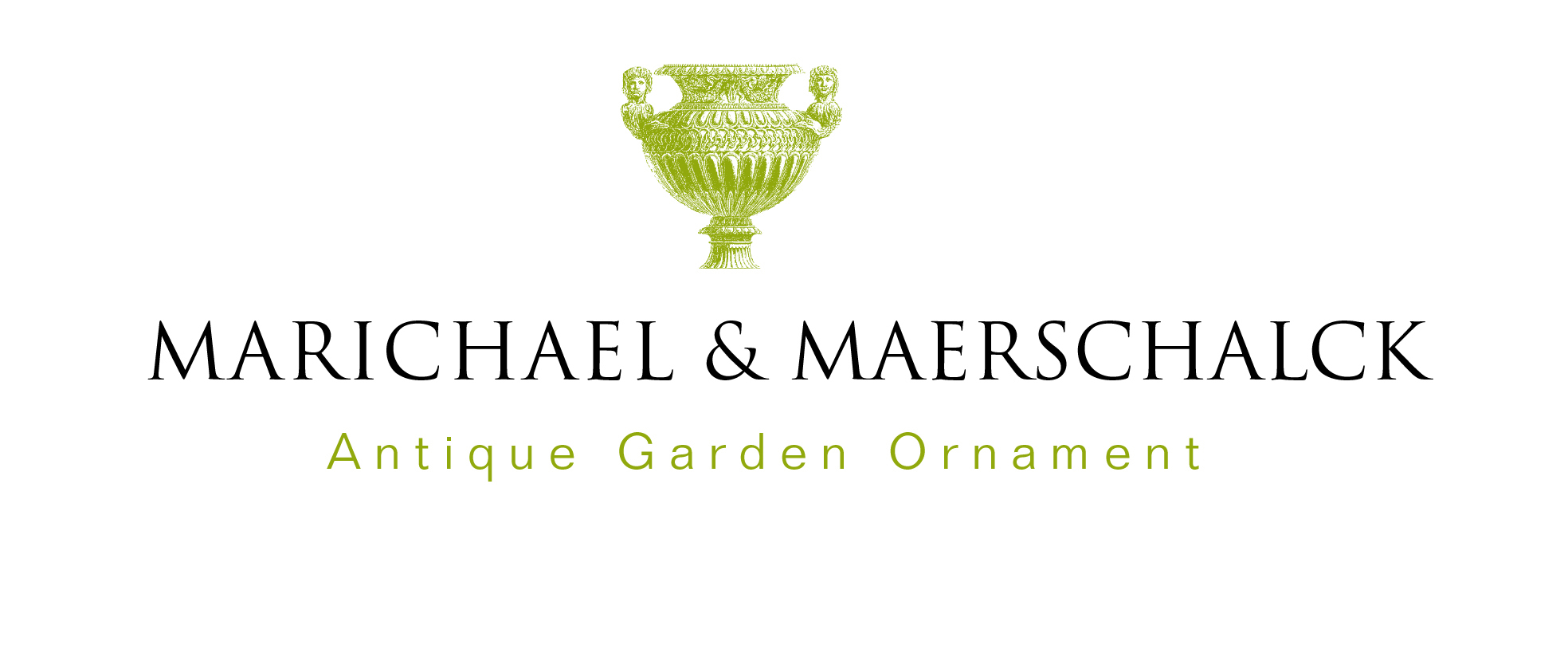- Home
- Why
Why
Although it is one of our primary necesseties to decorate, garden ornaments -strictly speaking- are of more value than bric-a-brac on the mantelpiece or a detailed decoration of a silver dish.
Gardeners who use ornaments with an eye for style, material, proportion, space, surrounding plants and (sometimes historical and) personal associations often feel elevated above space, time, mood or memory.
When garden ornaments are well-picked and cunningly placed they can change the character of our experience of the garden in the following ways:
Centre and space.
Ornaments are a focus in the garden and force the eye of the spectator to go there where the garden architect wants it to - compare with the gesture of a magician's hand that attracts the public. The right ornament on the right place can enlarge or reduce the perceived space of a garden, can determine the width of a path, can influence the place where you want to rest in a garden, can tempt someone to look away from the lawn.
Time.
It is needless to say that antique garden ornaments perfectly link a garden to the past, while a modern piece of art will link a garden to the future. An antique urn, for example, will turn back the garden clock to ancient times, while an abstract sculpture made of stainless steel will make people look ahead in time.
Locations.
Ornaments made in indigenous style or of local materials will embed a garden with its autochthonous habitants. Other ornaments will make garden lovers (dream of) travel(ling) to Italy, England, France, Japan or even further. . because of their borrowed styles or materials.
Moods.
Just like between sunlight and the sound of splashing water, an interaction can be created between garden ornaments and the garden itself that will influence the mood of all those who enter the garden: it will stimulate ideas, calm people, stimulate their imagination, make them smile. .
Structure and endurance.
Large-scale garden ornaments, from sculptures and fountains to Venetian wells, often help to build the frame that supports a garden: they both form a garden and give a reassuring feeling of endurance and durability through the course of seasons in which several plants come and go. Ornaments are the pillars on which a garden is built.
Seasoning.
Ornaments are that extra something, the seasoning that can strengthen certain scents in the garden or can even blend various ingredients to an agreeable whole. Without the suitable garden ornament a skilfully laid out and maintained garden can look vaguely unfinished, flat, empty, with a lack of vitality.
The supporting frame.
Ornaments reinforce the beauty and strength of nature and encourage at the same time the garden visitor to see and appreciate things that (s)he otherwise might have overlooked. Grapevines, for example, lying on a marble urn; a cluster of ferns can seem a mass of greenery until a little fountain is put in it and an oasis is created. . . An antique statue, an old sundial, an eroded urn or vase charm trees and flowers surrounding them and gradually let seep through a feeling of depth and emotional resonance in the garden. Their associations can bring back memories, memories of childhood, of a personal beauty ideal, memories of everything that we have seen and evaluated a long time ago. In this way a beautiful garden ornament welcomes us time and again in the garden and makes us immediately feel home every time.
Antieke Tuinornamenten
Viooltjesdreef 39031 Baarle-aan-de-Leie
info@antieke-tuinornamenten.be+32 (0) 9 282 20 97+32 (0) 475 53 41 63
Opening hours
Bezoek aan de tuin enkel na afspraak.
